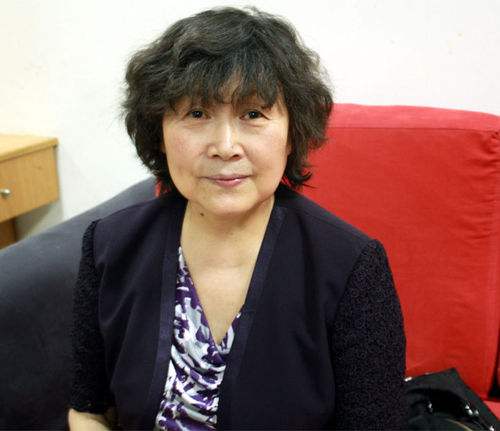Chinese expert: even 'mild' coronavirus cases require a quarantine
By ZHAO XU in New York | chinadaily.com.cn | Updated: 2020-04-01 11:19

Without the effective quarantine of even those with mild cases of the coronavirus, it's hard to see a real slowdown in the crisis, according to Dr Yang Gonghuan, former vice-director of the Chinese Center for Disease Control and Prevention, the equivalent of the US CDC.
Since returning to New York from Beijing in late February, Yang, who lives with her husband in Flushing, Queens, has been closely watching the pandemic, which has hit New York much harder than any other US city, with a toll approaching 41,000 infections and more than 900 deaths as of Tuesday morning, according to NYC Health data.
Of the city's five boroughs, Queens, with a large concentration of working-class people and immigrants, has suffered the most.
"In New York, it's true that a lot of measures have been taken by the state government, including closing all non-essential businesses and banning any gathering of more than two people," she said. "But all these efforts may have partly been undone by the fact that for the moment, effective quarantine that lies at the core of prevention is still very much lacking.
"Only by stopping the infected people from spreading the virus to those around them can the city finally begin to gradually free itself from the tightening grip of the disease," she said.
Currently, only people showing severe symptoms – such as chest pains and breathing difficulties – are admitted to the hospital, where testing is performed.
Those who are experiencing a mild fever, cough or other non-critical symptom are asked to go back home for self-quarantine, without any testing.
"At this moment, the current guidance — and this may change — is that if you have symptoms that are similar to the cold and the flu and these are mild symptoms to moderate symptoms, stay at home and try to manage them," Dr Patrice Harris, president of the American Medical Association, told CNN, recommending rest, hydration and medications that reduce fever.
In an area such as Queens, where it's not uncommon for a working immigrant family of four or five to live in a single-room apartment, one infected family member could easily pass the virus onto others, even while wearing a mask and taking other preventive measures.
And the other family members, who may or may not have been infected, are still going out, to supermarkets for example, before the onset of any symptoms.
"Back when China was struggling with the epidemic, there were torrents of reports from Western media about what China was doing with Hubei, the hardest-hit province, and with Wuhan – its capital city and then the epicenter of the outbreak," she said. "People talked about the lockdown of the city as the single most dramatic and desperate effort to contain the virus.
"While the lockdown is essential in halting the virus' spread to the rest of the country, it's what has been done inside the province that has helped to eventually bring down the numbers," she said.
"And these are the things that I believe decision-makers in New York should be really looking into," she said.

According to Yang, who was closely involved with China's fight with the SARS epidemic in 2003, in early February, Wuhan began in earnest to try to isolate all infected, about 10 days after the lockdown.
"Initially, not unlike what's happening right now in New York, the mildly ill were asked to self-isolate at home, a mistake that was quickly recognized and corrected," she said.
The construction of the first makeshift hospital commenced on Feb 3. It took an average of 1.5 days to build one, with the number of beds ranging between 700 and 900.
In total, 16 such hospitals were built in Wuhan, the last one in operation until March 10. More than 12,000 patients, all with mild symptoms upon admission, stayed in the hospitals at one time or another.
"Initially we didn't have enough test kits, so we didn't have everyone tested, although an overwhelming percentage of those with minor symptoms did test positive later," she said. "But what we did was that we made sure that those suspected of being infected would not become a source for further spreading."
As Yang was talking on Monday morning, a US Navy hospital ship docked in Manhattan, adding another 1,000 beds to the nearly 3,000 that are now ready for patients at the Javits Convention Center, converted into a temporary hospital by the US Army Corps of Engineers over the past few days. Unlike the makeshift hospitals in Wuhan, those spaces will not be for COVID-19 patients, but for people with other ailments who are currently hospitalized or will require hospitalization.
The purpose is to make more beds available in New York hospitals for people who are victims of the pandemic and demonstrate severe symptoms.
In the meantime, those deemed not seriously ill will be asked to stay at home.
"Frankly I don't think this is the best idea – you've got to plug the bottle, and centralized quarantine is a proven, effective way to do it," said Yang. "Otherwise, you'll just continue to have more and more severe cases."
























